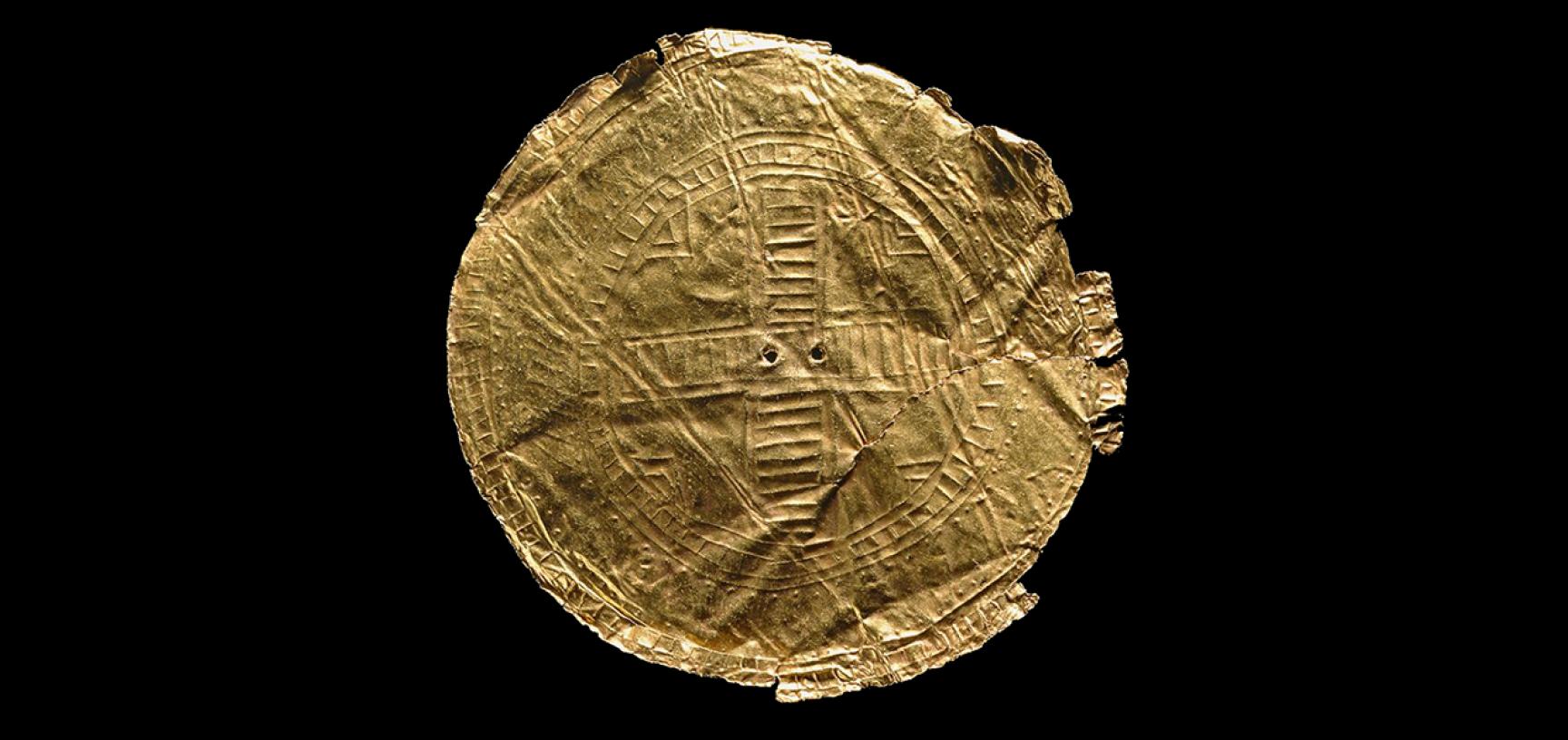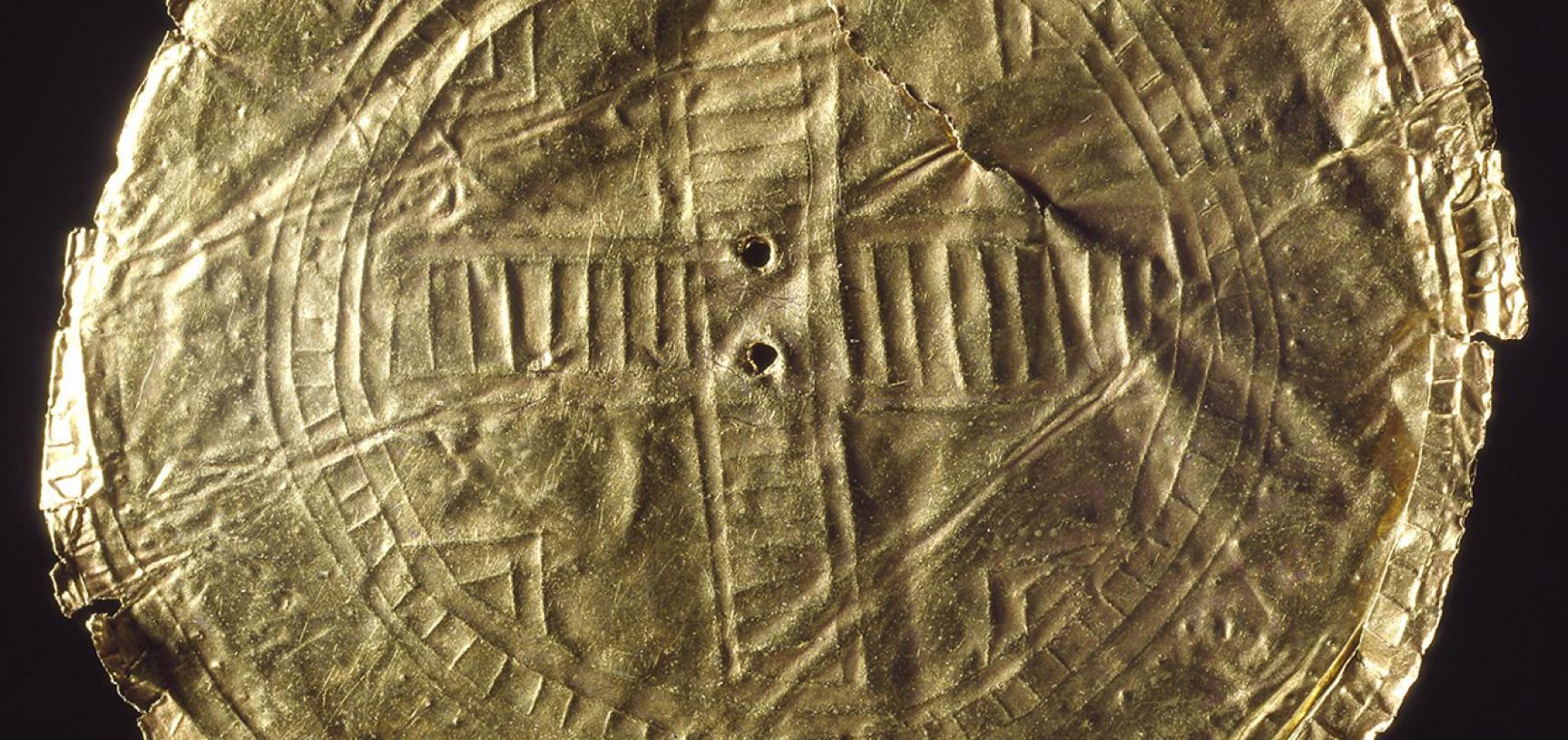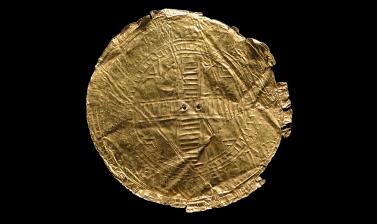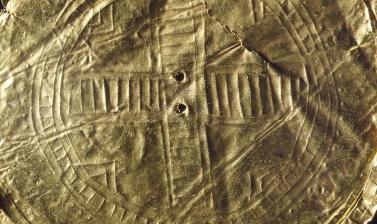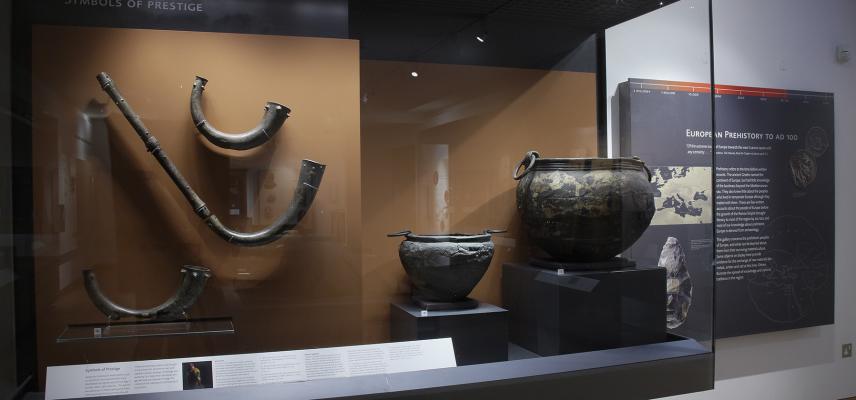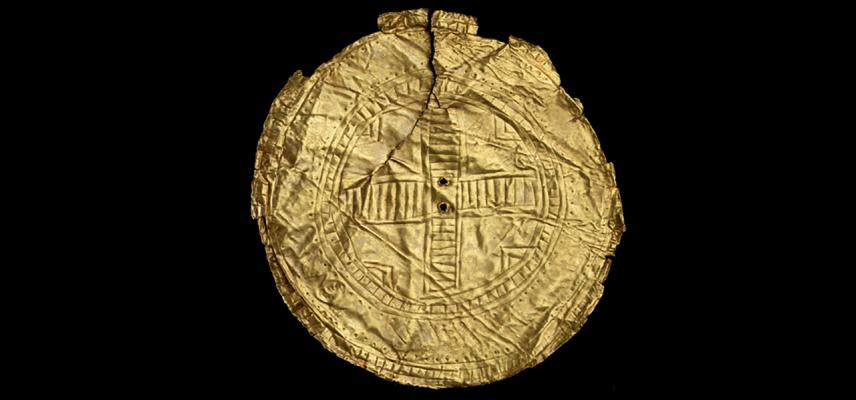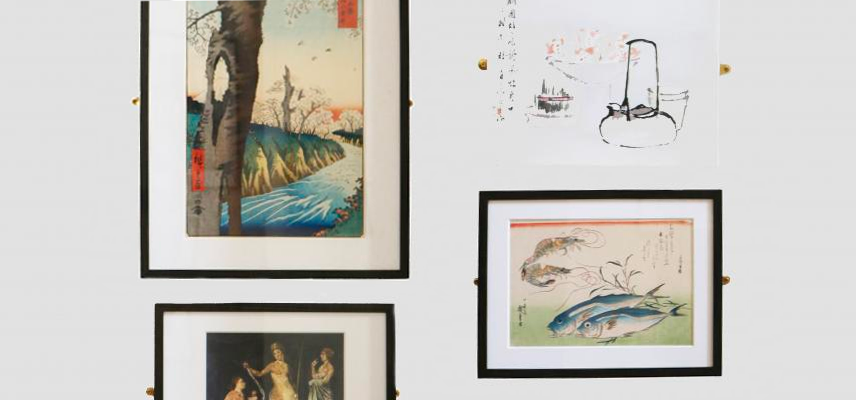BALLYSHANNON 'SUN DISC'
One of the earliest documented prehistoric objects
This small decorated gold-foil disc was found in 1669 at Ballyshannon, Ireland, by men looking for a place described in an old Irish song where 'a man of a gigantick stature' was buried with gold ornaments. The discovery is recorded in the 1695 edition of Camden's Britannia (first published in 1586), the first major regional account of the history and antiquities of Britain and Ireland.
The disc is made of a thin sheet of beaten gold, and has raised decoration (repoussé) of a cross-shape surrounded by circles and geometric patterns. Objects such as this are known as 'sun-discs' and are one of the earliest forms of sheet gold-work found in Britain and Ireland, dating to around 2500-2150 BC. They often have a central perforation and it is likely that they were probably attached to a backing, and may have been worn on clothing such as a button cover or spangle. They are often found singly or in pairs in burials.
This is one of a pair of two very similar discs that were recorded as being found at Ballyshannon. This disc was donated to the Ashmolean in 1696, but the fate of the other is unknown.
Ballyshannon Disc
Ballyshannon, County Donegal, Ireland
c. 2500–2150 BC
Gold
Diam. 5.5 cm
Presented by The Revd Dr Charles Hopkins, 1696
View on our online Collection Online Site: AN1836 p.139.372
License this image - visit the Ashmolean Image Library


